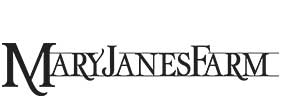|
New cookbook: Romancing the ’cow’ girl lifestyle with MaryJane Butters Interview • DIY maverick gives cows their due in new tome, which is part animal guide and part cookbook. By Kathy Stephenson, for the The Salt Lake Tribune, May 29, 2014 Years before backyard chickens became trendy, MaryJane Butters was "gussying" up her coop with wallpaper and curtains and telling readers of her popular magazine, website and blog just how easy it was to raise backyard birds. "Someone needed to make it acceptable," said Butters. "Then the whole thing exploded." With her new book, "Milk Cow Kitchen," the Ogden native and DIY guru hopes to do the same thing with cows. "No one has ever written a book like this," she said during a recent telephone interview from her farm outside of Moscow, Idaho. "Other books aren’t about the love and cow-panionship, they’re so removed from what someone could do in their backyard." "Milk Cow Kitchen," published by Utah’s Gibbs Smith, sells for $35 and is in bookstores. It should be available on Amazon on June 1. The colorful publication is two books in one. First, it’s a cookbook, with recipes for making butter, cheese and yogurt as well as for using those dairy products in everyday baking and cooking. The second half is a guide for buying, raising, milking, breeding and caring for a backyard cow and handling the manure it leaves behind. Something Butters knows all about. The Ben Lomond High School graduate is a descendant of Mormon pioneers. Her family, gardened, canned, raised or hunted meat and made their clothes. Before her two children were born, Butters worked as the only woman on a carpentry crew at Hill Air Force Base; was one of the first female wilderness rangers hired by the U.S. Forest Service; and was the first woman station guard at the Moose Creek Ranger Station, the most remote Forest Service district in the continental U.S. She answered a few questions about the book, her "cow" girl romance and what she's planning next. You’ve written a whole book about cows. Are they your favorite farm animal? I do love cows. Perhaps my last name has something to do with it. But I also spent a lot of time on my uncle’s dairy in Morgan (Utah) and I learned that cows have personalities; and there’s a bounty of wonderful things you can make with this placid, pastoral animal. How many cows do you have on your farm? We have 12, all Jersey’s from miniature and micro to full size. We have the whole gamut. Do they have names? Yes. There’s Etta Jane, Miss Daisy, Rosetta, Maizy, Sally O’Malley and Sweetheart. The boys all get names, too like Beau Vine. When was the first time you made cheese or butter? My mother always made butter. She brought home all the milk from the local dairy. Back then dairies were small, maybe they had 30 cows. They’ve always been part of my life. In 1979, my daughter was born and we had a Jersey cow then. We lived in White Bird, Idaho, on a ranch and she grew up on raw milk and I made soft cheese by hand. There wasn’t all the equipment like there is now. Yes, I was excited to see that the book includes a recipe for making butter in a food processor. I know, everyone is surprised that you don’t have to sit on the front porch in your frock and have a butter churn. I’ve tried to make everything in the book accessible. Is there a recipe that everyone — even non-cow girls — should try? The soft cheese is so easy. And it’s really yummy and you can put herbs in it. But there’s already so many great artisan cheeses available. Why should I make my own? Whether it’s cheese or yogurt or bread or gardening, all these things are important therapy. Looking back, embroidery and all those hand-made skills were therapy. And milking a cow is like taking a long hot bath. You can solve all your problems with your head nestled into her warm flank and the milk going into the pail. It’s just very meditative. Then you have these wonderful products that taste so good. It takes us back to our roots. In this cyber-age, we're losing touch with anything our grandparents did. I’m trying to make it playful and romantic so people go back to their roots. I think we’re happier when we are connected with our roots. You talk about the "milk-her-once-a-day-not-twice" in your book. What’s that about? People think you have to milk a cow twice a day. But they produce too much milk and it wears them out. They will adjust their milk production to how much you take. I milk my cows every day at 11 a.m. But you could milk them everyday when you get home from work or before you leave for work. You can also time your breeding schedule if you want to take two months off in the summer. You were one of the pioneers in the DIY movement, now so many are eating organic and making their own soap. What do you think about that? I love it. I feel like we've made huge progress. I helped with what constituted the first organic standards. I remember flying to Boise to talk to legislators who didn’t want me to put an organic label on my foods, because then I could charge more money. We’ve come a long way. What’s next? I’m working on a bread book. I’ve already launched the idea in the magazine. It’s a starter that you keep on the counter and you just add flour and water to it. I’m using heirloom wheat and having fun with that. And it’s justification for a new oven. |


